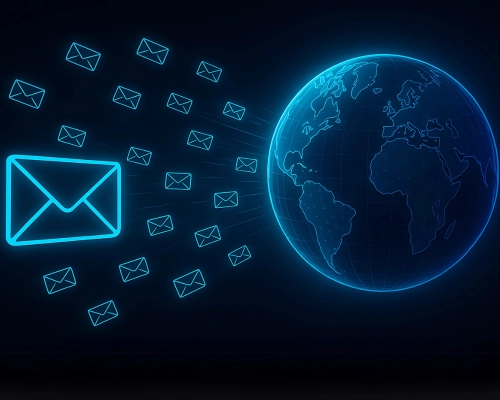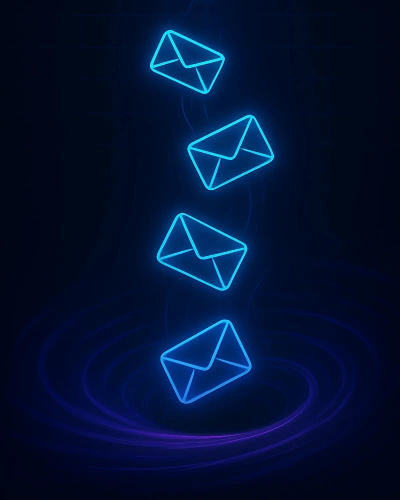Blog Post
Mastering Email Marketing for Content Distribution with AI
- Update
- Read Time: 8 Min
Share

Content is king, but even the best content needs help getting seen. That’s where email marketing for content distribution comes in. While social media feeds move fast and organic reach continues to drop, email remains one of the most effective and controlled ways to share your content, build trust, and drive real engagement.
Whether you’re distributing blog posts, newsletters, or lead magnets, email gives digital marketers direct access to their target audience without being at the mercy of algorithms. With the right strategy—and some help from AI-powered tools—you can turn email into your strongest content distribution channel.
Why Email Marketing Still Dominates for Content Distribution
In a digital world overflowing with content, distribution is what separates success from silence. So why is email marketing still the top choice for content reach?
Ownership: Your email list is yours. Unlike social media, where reach can vanish overnight due to algorithm changes, email guarantees delivery to your list.
Higher engagement: The average email open rate outperforms social post visibility. Plus, emails with strong subject lines and relevant content often drive higher click-through rates.
Personalization: Emails can be tailored for different segments of your audience, unlike a single social post blasted to everyone.
Measurability: Through analytics tools, marketers can track opens, clicks, and conversions, making email a more data-driven channel.
Bottom line? If you want predictable, repeatable results from your content distribution strategy, email marketing delivers.
Email vs. Social Media: Which Channel Drives More Content Reach?
While social media platforms are great for discovery and brand awareness, their limitations are clear: short content lifespan, algorithmic restrictions, and limited targeting. A viral tweet today can be buried tomorrow. In contrast, email marketing provides persistent, direct access to your target audience, ensuring that your blog posts and lead magnets aren’t lost in the noise.
Think of social media as a loudspeaker and email as a one-on-one conversation. Used together, they can support your content distribution channels, but email gives you the ownership and reliability that social media lacks.
Common Challenges in Content Distribution via Email
Despite its strengths, not all email campaigns are created equal. If your distribution isn’t getting the traction you want, here are common pitfalls:
Poor Segmentation
Sending the same email to everyone on your list ignores user behavior and preferences. This leads to irrelevant content and missed opportunities.
Low Open Rates
Weak subject lines, poor timing, or inconsistent value can crush your open rate. If subscribers aren’t opening, your content isn’t getting seen.
One-Size-Fits-All Messaging
Generic content leads to disengagement. Your blog posts and resources should be matched to the interests or behavior of your subscribers.
Inconsistent Scheduling
Irregular send times cause your audience to forget you, or feel spammed when you suddenly show up. A predictable cadence builds trust.
Fixing these requires more than guesswork. That’s where AI steps in.

Segmenting Your Audience for Maximum Engagement
One of the most important things digital marketers can do is move away from a one-size-fits-all approach. Audience segmentation ensures you’re sending relevant content to people who actually care.
Segment by:
Behavior: Send follow-up blog posts based on previous clicks.
Interests: Use tags or categories to group readers.
Customer journey: New subscribers may need intro content; loyal fans might be ready for product guides.
Effective segmentation increases both open rate and click-through rate, while helping to build trust with your audience.
How AI Enhances Email Marketing for Content Distribution
AI-powered tools are transforming how digital marketers approach email marketing for content. Here’s how smart automation makes campaigns more effective:
Behavior-Based Segmentation
AI analyzes how users interact with previous emails and your website to create smarter segments. You can send blog posts to readers who clicked similar content, increasing relevance.
Predictive Content Recommendations
Rather than guessing what content to send next, AI can predict what your audience wants based on past behavior. This ensures more relevant content is delivered.
Optimal Send Time Detection
Forget manually choosing when to hit “send.” AI determines when each subscriber is most likely to open your emails, improving open rate and engagement.
A/B Testing Automation
Instead of manually testing subject lines or content blocks, AI can run and optimize tests on the fly, adjusting your email campaign in real-time.
These tools help you improve every element of your marketing for content distribution, with less guesswork and more confidence.

Tools That Use AI for Smarter Email Distribution
If you want to automate smarter, not harder, start with a partner who does it for you. At Reisinger Strategies Group, we offer done-for-you email marketing services that use AI-powered delivery optimization, behavior-based targeting, and performance analytics. Our approach ensures your emails land in the right inbox, at the right time, with the most relevant content, so your message drives real results.
We help you:
- Automate delivery using predictive send-time insights
- Personalize messages to your target audience
- Improve click-through rate, open rate, and conversion rate through continuous A/B testing and optimization
For teams managing email marketing in-house, here are two widely used platforms that also support AI-powered distribution:
- ActiveCampaign: Known for its robust automation and behavior-based workflows.
- Mailchimp: Offers AI-powered subject line suggestions, send time optimization, and built-in analytics tools.
Whether you manage emails internally or outsource to professionals, using AI-driven tools ensures your email campaign reaches the right people with the most relevant content, and at exactly the right time.
Real-World Results: How AI Improves Engagement
Imagine this scenario: A digital marketer sends out weekly blog posts to 5,000 subscribers using a basic newsletter. Average open rate? 16%. Click-through rate? 1.8%.
Now, add AI:
- Personalized subject lines based on user interest
- Content blocks adapted per user segment
- Smart send times
Within 6 weeks:
- Open rate climbs to 27%
- Click-through rate doubles to 3.6%
That’s not magic, it’s just a smarter content distribution strategy using AI and analytics tools.
That’s not magic, it’s just a smarter content distribution strategy using AI and analytics tools.
Even small adjustments based on behavior and preferences can drastically expand your content reach.
Final Tips for Getting Started
Email marketing for content distribution doesn’t need to be complicated. But it does require planning.
Here’s how to start:
Define Content Goals
Know what you want: more blog post views? More downloads? A lead magnet funnel? Your email strategy should match your goals.

Align Email + Content Calendar
Coordinate your email campaigns with your content publishing schedule. This ensures consistency and reinforces messaging.
Use AI Tools to Test and Learn
Leverage automation and AI-powered platforms to test timing, subject lines, and content blocks. Let the data guide you.
For marketers prioritizing long-term reach and control, email remains a cornerstone of distribution strategy, as noted by the Content Marketing Institute.
Monitor and Refine
Use analytics tools to track what’s working. Adjust your strategy based on open rate, click-through rate, and conversion trends.
Consistency, relevancy, and smart automation are the keys to building trust and growing your audience.
Metrics That Matter: How to Measure Success
If you can’t measure it, you can’t improve it. To make your email marketing for content strategy truly data-driven, you need to monitor the right metrics:
Open rate: Tells you how effective your subject lines and timing are.
Click-through rate: Measures how engaging and relevant your content is.
Unsubscribe rate: A high number may signal poor targeting or content fatigue.
Conversion rate: Tracks the end goal—whether that’s downloads, sign-ups, or purchases.

While open rate gets the spotlight, email success depends on a broader set of indicators. As Litmus explains, effective email measurement includes click-through rate, conversion rate, unsubscribe rate, revenue per email, and subscriber lifetime value, each offering deeper insight into campaign ROI.
Using analytics tools, you can spot trends, test hypotheses, and optimize your future email campaigns with precision.
Written by
Reisinger Strategies Group Team
Reisinger Strategies Group helps businesses grow with AI-powered marketing solutions, from strategy to execution and built to drive real results.



